The Ultimate Beginner’s Guide to the DCS F-16 Viper: Mastering Air Combat and Ground Support
Introduction
The F-16 Viper is a cornerstone of aerial combat in DCS World, known for its agility, advanced technology, and multirole capabilities. This guide delves deeper into the aircraft’s performance, tactics for missile evasion, and combat maneuvers, while also examining situational awareness and the extreme stresses faced by pilots.
Whether you’re a newcomer or looking to refine your skills, this comprehensive overview will enhance your understanding of the Viper’s capabilities and strategies in DCS World.
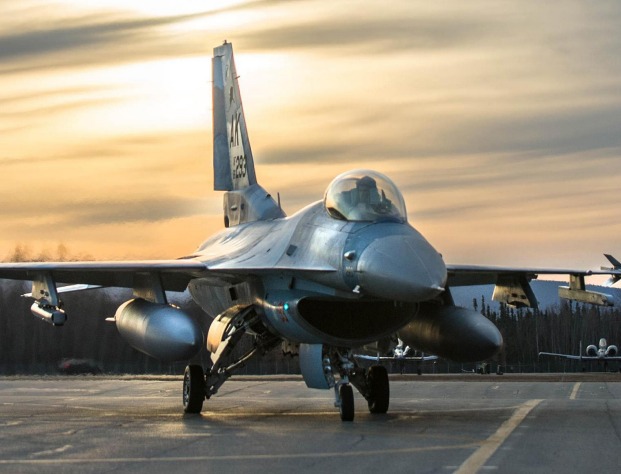
Performance Characteristics
Speed and Maneuverability
The F-16 Viper is engineered for speed and agility, achieving a maximum speed of around 1,500 knots (1,732 mph) at high altitudes. The aircraft’s thrust-to-weight ratio allows it to execute quick and sharp turns, essential for air-to-air combat.
Brief History of the F-16 Viper
Initial Competition and Development
The F-16 Viper, officially known as the F-16 Fighting Falcon, was developed in the 1970s as part of the U.S. Air Force’s Lightweight Fighter (LWF) program. The primary goal was to create a more cost-effective and versatile fighter that could engage enemy aircraft effectively while being agile and easy to maintain.
The competition was fierce, with the Viper facing off against other designs, including the Northrop YF-17, which later became the F/A-18 Hornet.
In 1974, the General Dynamics YF-16 prototype won the LWF competition, leading to the development of the F-16. The aircraft’s innovative design featured a frameless canopy, a side-mounted control stick, and a fly-by-wire control system, which significantly enhanced its agility and pilot control.
Introduction and Variants
The F-16 entered service with the U.S. Air Force in 1978 and has undergone numerous upgrades and variants over the years. Key models include:
- F-16A/B: The original single-seat (A) and two-seat (B) variants focused primarily on air-to-air combat.
- F-16C/D: These upgraded versions introduced advanced avionics, improved radar capabilities, and enhanced weapons systems, enabling multirole operations.
- F-16E/F: The Block 60 variant, developed for the United Arab Emirates, included advanced avionics, conformal fuel tanks, and increased capabilities for air-to-ground missions.
- F-16V: The latest variant, featuring the AN/APG-83 AESA radar, modernized cockpit displays, and enhanced electronic warfare systems.
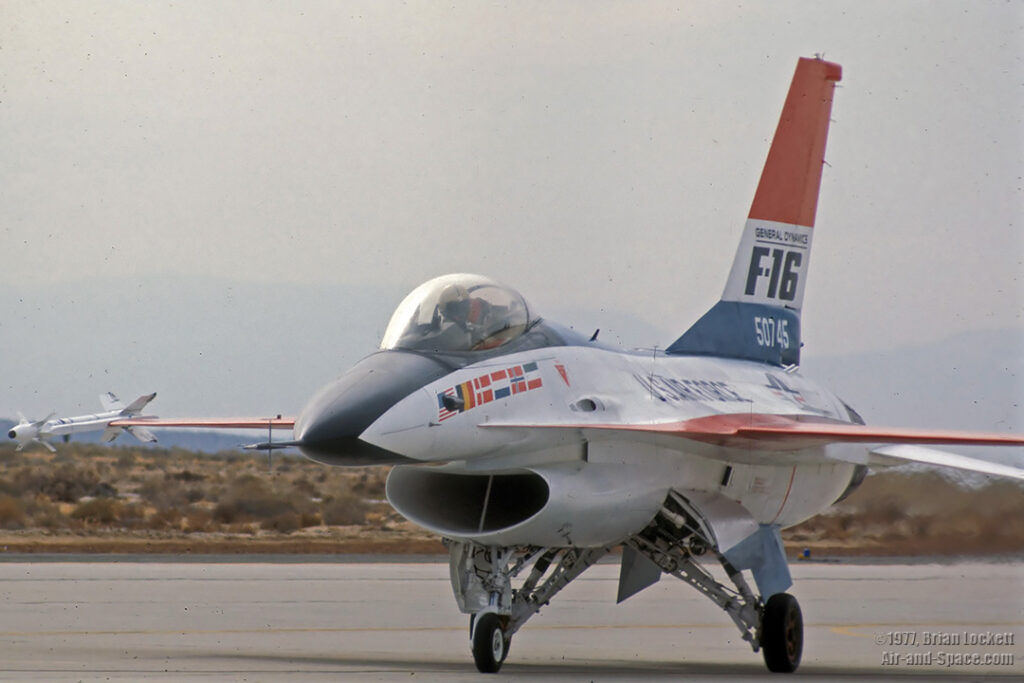
Sales and Production Numbers
The F-16 has become one of the most widely produced and exported fighter aircraft in history. As of today, more than 4,600 F-16s have been built, serving in various capacities around the globe.
- Latest CPU’s Available Now – Amazon.com
- Get a NEW GPU Best Performance – AMAZON.com
- Upgrade RAM Here today – AMAZON.com
- Prebuilt PC Options – AMAZON.com
Global Operators
The F-16 is used by over 25 countries, making it a cornerstone of many air forces. Some of the key operators include:
- United States: The largest operator, using various F-16 models in both air-to-air and air-to-ground roles.
- Turkey: A significant operator, utilizing F-16s for regional defense and NATO commitments.
- Israel: Known for extensive upgrades and modifications, the Israeli Air Force employs F-16s in various combat roles.
- Pakistan: Operates several F-16 variants, focusing on air defense and ground attack missions.
- Greece, Norway, and South Korea: These countries also utilize the F-16 in various capacities, with ongoing modernization efforts to enhance capabilities.
THe Viper continues to Exceed Expectations.
The F-16 Viper has a rich history characterized by innovation, versatility, and global impact. From its inception in the 1970s through ongoing upgrades and widespread international adoption, the Viper remains a vital asset in modern air combat, showcasing the ability to adapt to evolving threats and mission requirements. Its legacy as a premier multirole fighter continues, with the F-16V variant leading the charge into the future.
Best Turning Speeds
The Viper’s optimal turning speed typically ranges from 300 to 450 knots, depending on its loadout and current weight. Maintaining this speed allows pilots to maximize their turning capabilities while retaining energy for further maneuvers.
Rate of Turn vs. Instantaneous Turn Rate
- Instantaneous Turn Rate (ITR) is critical in dogfighting. The Viper’s ability to change direction quickly allows it to outmaneuver less agile adversaries. Understanding the aircraft’s ITR helps pilots engage effectively in close-quarters combat.
- Rate of Turn (ROT) is essential during extended engagements. The Viper maintains a high ROT at optimal speeds, allowing it to sustain engagements longer while retaining maneuverability.
Understanding One-Circle and Two-Circle Dogfights in the F-16 Viper
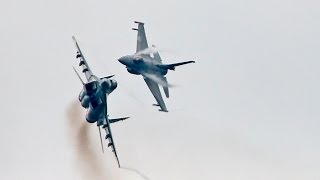
One-Circle vs. Two-Circle Fighting
In aerial combat, the terms “one-circle” and “two-circle” dogfights refer to the tactical scenarios in which aircraft engage each other. Understanding these concepts is crucial for leveraging the strengths of the F-16 Viper effectively.
One-Circle Fight
In a one-circle fight, both aircraft turn in the same direction within a tight radius. This type of engagement focuses on maintaining close proximity, allowing for quick shots and high maneuverability. The goal is to out-turn the opponent, getting into their firing arc while simultaneously avoiding their shots. Aircraft that excel in one-circle fights often possess high angles of attack (AoA) capabilities, allowing for tight turns without losing control.
Key Characteristics:
- Tight, sustained turns.
- Focus on immediate, close-range shots.
- High angles of attack.
Two-Circle Fight
Conversely, a two-circle fight occurs when the aircraft turn in opposite directions, creating a larger radius for maneuvering. This scenario allows pilots to use energy management strategically, positioning themselves for advantageous shots while maintaining a distance from the opponent. The F-16 Viper excels in two-circle engagements due to its superior energy retention and thrust-to-weight ratio, making it challenging for adversaries to outmaneuver it at greater ranges.
Key Characteristics:
- Larger turning radius.
- Focus on energy management and positioning.
- Ability to control the engagement range.
Why the F-16 Viper Excels in Two-Circle Fights
The F-16 Viper is nearly unbeatable in a two-circle fight because of its:
- Energy Retention: The Viper’s design allows for excellent energy management, enabling pilots to maintain speed and altitude advantage during sustained maneuvers.
- Thrust-to-Weight Ratio: This characteristic allows the Viper to execute rapid repositioning, keeping the pressure on adversaries while avoiding getting trapped in a close-quarters fight.
Limitations in One-Circle Fighting
While the Viper is a formidable aircraft, its limitations in one-circle fights stem from its restricted AoA capabilities. Compared to aircraft like the F/A-18 Hornet or Mirage 2000, which are designed for high AoA performance, the Viper may struggle to maintain the same level of agility in tight turns. This makes it less effective in engagements that demand sustained, tight maneuvering.
Graphic Representation
In a One-Circle Fight (A and B turning tightly), both aircraft are trying to get within the optimal firing arc while maintaining a tight turning radius. In a Two-Circle Fight (A and B turning in opposite directions), the focus is on managing energy and distance, allowing for strategic positioning.
You Need to UNderstand How And When to Fight.
Understanding the dynamics of one-circle and two-circle dogfights is essential for effectively flying the F-16 Viper. While the Viper thrives in two-circle engagements due to its energy retention and maneuverability, its limitations in AoA restrict its effectiveness in one-circle fights. By mastering these concepts, pilots can exploit the Viper’s strengths and navigate the complexities of aerial combat with confidence.
Air Combat Capabilities
BVR (Beyond Visual Range) Combat
In BVR scenarios, the Viper’s advanced radar and missile systems provide a significant edge.
Key Features
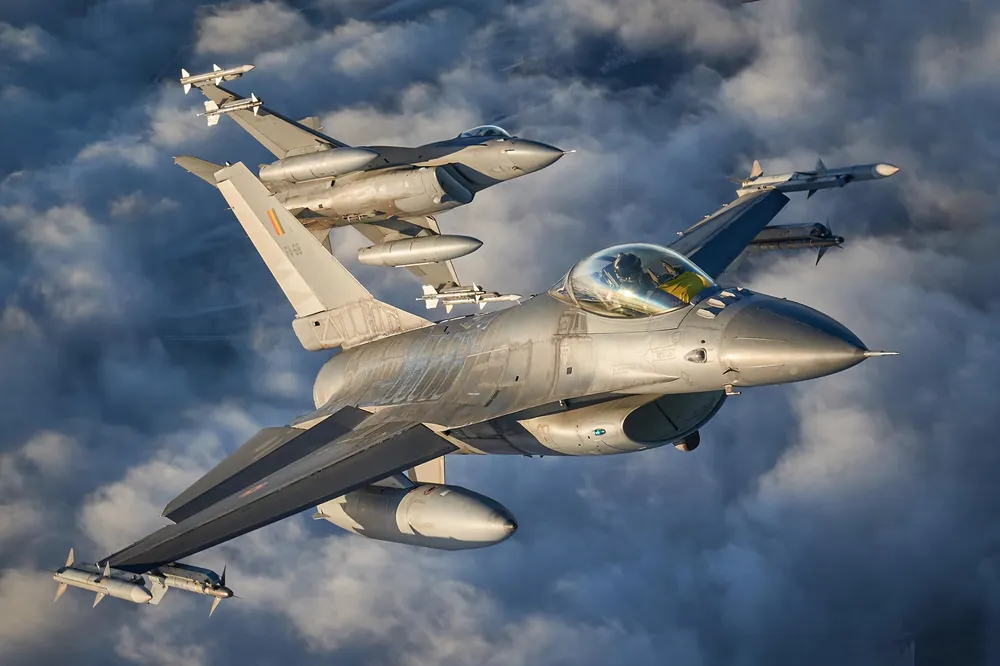
- AN/APG-68 Radar: This multi-mode radar system is crucial for detecting and tracking enemy aircraft, enhancing situational awareness during engagements.
- AIM-120 AMRAAM: With a range exceeding 50 miles, the AIM-120 allows Viper pilots to engage threats from a distance, minimizing exposure to enemy fire.
Tactical Evasion Techniques
When faced with incoming missiles or anti-aircraft artillery (AAA), Viper pilots can employ several tactics:
- Chaff and Flares: The use of chaff can confuse radar-guided missiles, while flares are effective against infrared-guided threats. Deploying these countermeasures can increase survival chances during engagements.
- Break Turns: Executing a high-G break turn can drastically alter the aircraft’s trajectory, making it more difficult for incoming missiles to lock on. This maneuver involves a sudden change in direction, often at high speeds, to evade threats.
- Terrain Masking: Flying low and using the terrain for cover can help evade radar detection. By flying beneath radar coverage, pilots can reduce the chances of being targeted by enemy surface-to-air missiles (SAMs).
BFM (Basic Fighter Maneuvers)
In BFM, the Viper’s agility and performance are critical. Effective tactics include:
- Energy Management: Maintaining energy during turns is vital for positioning. Avoid excessive banking that can bleed speed and prevent effective turn performance.
- High-G Turns: The Viper can sustain high G-forces, allowing for tight turns that can outmaneuver adversaries. Understanding the aircraft’s limits and pilot G-tolerance is essential for executing these maneuvers.
One-Circle vs. Two-Circle Dogfights
- One-Circle Fight: In this scenario, both aircraft turn in the same direction. The goal is to maintain a close turning radius to stay within the opponent’s firing arc. The Viper excels here due to its instantaneous turn rate, making it effective in one-circle engagements.
- Two-Circle Fight: In a two-circle engagement, aircraft turn in opposite directions, creating a larger radius. This allows for strategic positioning and greater range on shots. While the Viper is capable in this scenario, it may need to rely on energy management to maintain an advantage.
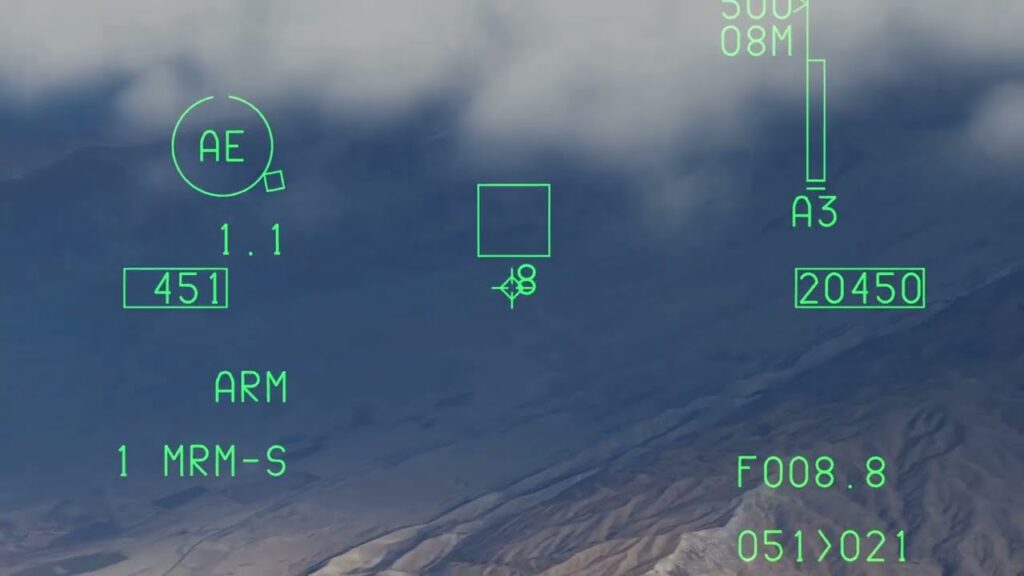
HMCS (Helmet Mounted Cueing System)
The HMCS enhances situational awareness significantly. It allows pilots to lock onto targets by simply turning their heads, which is invaluable in dogfights. Coupled with the AN/APG-68 radar, the HMCS provides an integrated system that allows for rapid target engagement and tracking while maintaining spatial awareness.
Air-to-Air Weapons for the F-16 Viper
- AIM-9 Sidewinder
- Type: Short-range, infrared-guided missile.
- Range: Approximately 20 miles (32 km).
- Usage: Ideal for close-range dogfights and engagements.
- AIM-120 AMRAAM (Advanced Medium-Range Air-to-Air Missile)
- Type: Beyond visual range (BVR), active radar-guided missile.
- Range: Typically exceeds 50 miles (80 km), depending on launch conditions.
- Usage: Used for medium- to long-range engagements.
- AIM-7 Sparrow
- Type: Medium-range, semi-active radar-guided missile.
- Range: Approximately 30 miles (48 km).
- Usage: Historically used for BVR engagements, though less common in modern setups.
- AIM-120D
- Type: Advanced version of the AIM-120 AMRAAM.
- Range: Greater than 100 miles (160 km).
- Usage: Enhanced capabilities for BVR combat, including improved guidance and performance.
- AIM-132 ASRAAM (Advanced Short Range Air-to-Air Missile)
- Type: Short-range, infrared-guided missile.
- Range: Approximately 20 miles (32 km).
- Usage: Primarily used by certain international operators of the F-16.
- MBDA Meteor
- Type: Beyond visual range, active radar-guided missile.
- Range: Over 100 miles (160 km).
- Usage: Offers advanced capabilities against high-speed, maneuvering targets. Not all Vipers are equipped for Meteor, as it depends on specific configurations.
Understand the Weapons Flexibility to WIn.
The F-16 Viper’s arsenal of air-to-air weapons provides it with significant versatility and effectiveness in combat. From short-range dogfighting with AIM-9 Sidewinders to long-range engagements using AIM-120 AMRAAMs, the Viper is well-equipped to handle a wide array of aerial threats. This adaptability has contributed to its success as a premier multirole fighter in air forces around the world.
Situational Awareness
In combat, maintaining situational awareness is crucial. This involves being aware of:
- Enemy Positions: Constantly monitor enemy aircraft positions and their intentions.
- SAM Threats: Understanding where surface-to-air threats are located and their engagement capabilities is critical for planning maneuvers.
- Team Coordination: Effective communication with teammates enhances overall situational awareness and can create opportunities for coordinated attacks or defenses.
Viper Situational Awareness Page: Importance and Functionality
Overview of the Situational Awareness Page
The Situational Awareness (SA) page on the F-16 Viper’s Multi-Function Display (MFD) is a critical tool for pilots, providing a comprehensive view of the tactical environment. This page consolidates information about both enemy and friendly targets, offering vital data that enhances situational awareness during missions.
Information Displayed
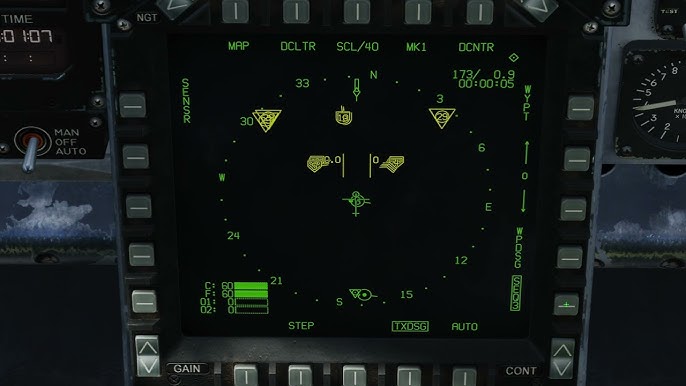
- Target Symbols: The SA page displays various symbols representing both friendly and enemy aircraft. Different shapes and colors are used to differentiate between them. For example:
- Friendly Targets: Often shown in green or blue, indicating their status as allies.
- Enemy Targets: Typically displayed in red or other contrasting colors to signify threats.
- Altitude and Range Data: The page provides altitude and range information for each target, allowing pilots to assess the relative position and potential threat level of both friendly and enemy aircraft.
- Bearing Information: The SA page shows the bearing (direction) of each target relative to the aircraft, helping pilots understand the spatial orientation of threats and allies.
- Track History: Pilots can see the movement and flight paths of tracked targets, which aids in predicting enemy actions and identifying potential ambushes or attacks.
- Sensor Data: Information from onboard sensors, such as radar and other systems, is integrated into the display to give real-time updates on the tactical situation.
Importance of the SA Page
The Situational Awareness page is vital for several reasons:
- Enhanced Decision Making: By displaying comprehensive tactical information, the SA page allows pilots to make informed decisions rapidly, improving their reaction times in high-stress environments.
- Threat Identification: Distinguishing between friendly and enemy aircraft helps pilots avoid fratricide (friendly fire) and allows for focused engagement on threats.
- Tactical Coordination: With a clear view of the battlefield, pilots can effectively coordinate with allied forces, optimizing strategies for engagement and support.
Role of Link 16 in Situational Awareness
Link 16 is a secure, jam-resistant tactical data link system that enables real-time information sharing between military aircraft and ground units. It plays a crucial role in enhancing situational awareness by:
- Data Sharing: Link 16 allows for the transmission of radar data, target information, and other tactical details between allied platforms. This real-time data exchange helps maintain an accurate picture of the battlefield.
- Identification Friend or Foe (IFF): The system incorporates advanced IFF capabilities, helping to differentiate friendly units from enemy targets. Each aircraft and unit in the network transmits identification codes, which the Link 16 system uses to confirm their status.
- Reduced Fratricide Risk: By clearly marking friendly forces on the SA page, Link 16 minimizes the chances of engaging allied aircraft, thereby increasing operational safety and efficiency.
- Networked Operations: Link 16 supports networked operations, allowing for enhanced collaboration among various platforms, including ground forces, naval units, and other air assets. This interconnectedness fosters a more cohesive operational approach.
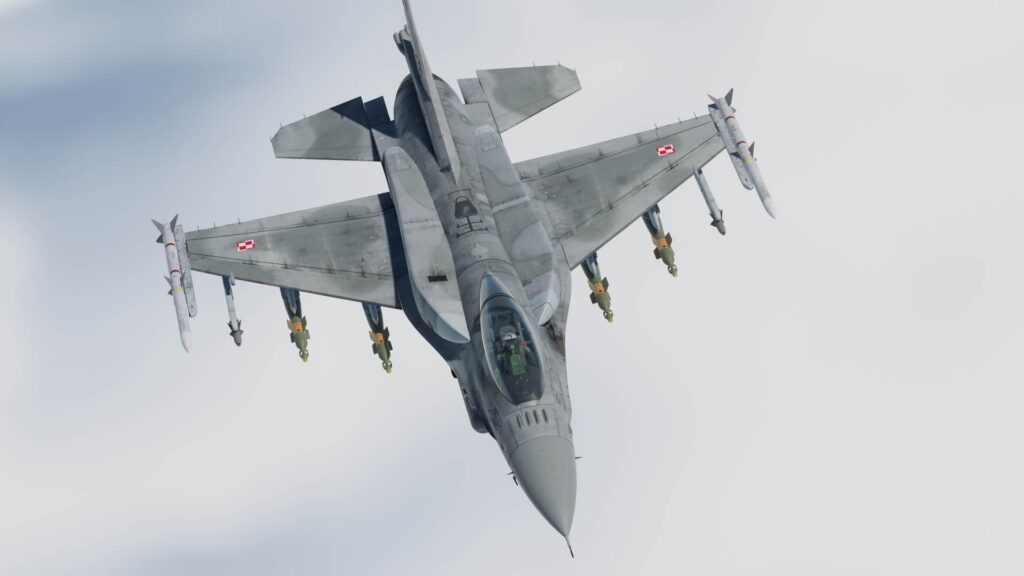
Situational Awareness is Crucial to Survival.
The Situational Awareness page on the Viper’s MFD is a crucial component for effective combat operations. By displaying real-time information about both friendly and enemy targets, it enhances pilots’ situational awareness and decision-making capabilities. Coupled with the capabilities of Link 16, which provides secure and accurate identification of targets, pilots can navigate complex airspace with greater confidence, ensuring a tactical advantage in various mission scenarios.
Ground Combat Capabilities
Air-to-Ground Weapons
The F-16 Viper’s versatility extends to air-to-ground operations. Key munitions include:
- Laser-Guided Bombs (LGBs): Effective for precision strikes against enemy ground assets, LGBs can be released from ranges of approximately 15 miles when employed from high altitudes.
- JDAM (Joint Direct Attack Munition): These GPS-guided munitions are effective at engaging both stationary and moving targets at ranges exceeding 15 miles.
Wild Weasel Role
The Viper is also proficient in the Wild Weasel role, tasked with neutralizing enemy air defenses.
Key Advantages

- AGM-88 HARM Missiles: These are effective against radar systems, allowing the Viper to suppress enemy defenses and clear paths for other strike aircraft.
- Advanced Targeting Systems: The aircraft’s targeting systems enable real-time reconnaissance and engagement of threats, providing a tactical edge in high-risk environments.
- Joystick / HOTAS – AMAZON.com
- Rudder Pedals – AMAZON.com
- Throttle Quadrant – AMAZON.com
- Gaming Chair – AMAZON.com
- VR Headset – AMAZON.com
Stress and G-Tolerance
Flying the F-16 Viper involves extreme physical stresses, particularly during high-G maneuvers.
G-Forces and Pilot Physiology
The Viper is capable of pulling up to 9 Gs, which can significantly affect a pilot’s performance and safety. The physiological effects of high G-forces include:
- G-Induced Loss of Consciousness (GLOC): Without proper conditioning, pilots can experience GLOC, which compromises their ability to control the aircraft.
- Fatigue: Extended engagements can lead to fatigue, impacting decision-making and reaction times.
Importance of G-Warmup
Before engaging in combat, pilots should perform a G-warmup to acclimatize their bodies to high G-forces. This can involve gradual increases in G-loads during training flights to help improve tolerance. DCS simulates these effects, making it essential for players to manage their engagements effectively.
DCS World Takes G’s into Account!
The DCS F-16 Viper is a formidable multirole fighter, excelling in both air combat and ground support roles. Understanding its capabilities and limitations—alongside effective tactics for missile evasion, situational awareness, and managing G-forces—can significantly enhance your flying experience in DCS World.
By mastering the intricacies of the F-16 Viper, you can take your virtual piloting skills to new heights, making the most of this remarkable aircraft. Embrace the challenges and excitement of flying the Viper, and prepare for thrilling aerial engagements and ground support missions in the ever-evolving landscape of modern warfare.
Author

Brendon McAliece (Aka Gunnie) is a a military veteran with 23 years working on Jet Fighters, their weapons systems and ejection seat/module systems as well as munitions and R&D. Involved with flight simulation since the 1980s, he has flown all the major flight simulators over the years.
He is an Australian expat who has lived in Malaysia, UK, Saudi Arabia and more recently Thailand. He is a multi-lingual blogger who loves to share his life experiences here on LetsFlyVFR.com and DreamingGuitar.com, with his lifestyle and Travel experiences Blog plus his Dreaming Coffee website.
Learn More @
DreamingGuitar.com – DreamingCoffee.com – LetsFlyVFR.com
( HOME – BLOG – SHOP – ABOUT )
As an Amazon affiliate I may benefit from qualifying sales.
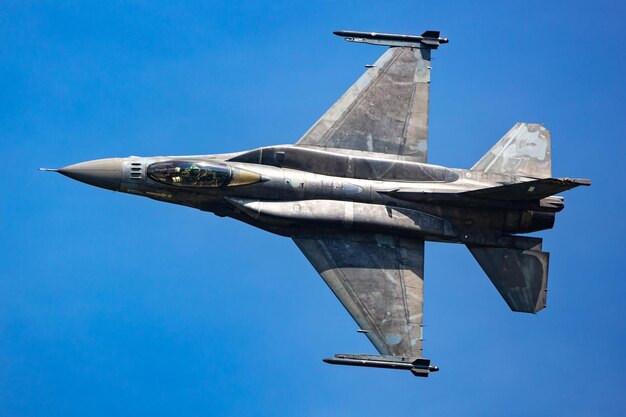





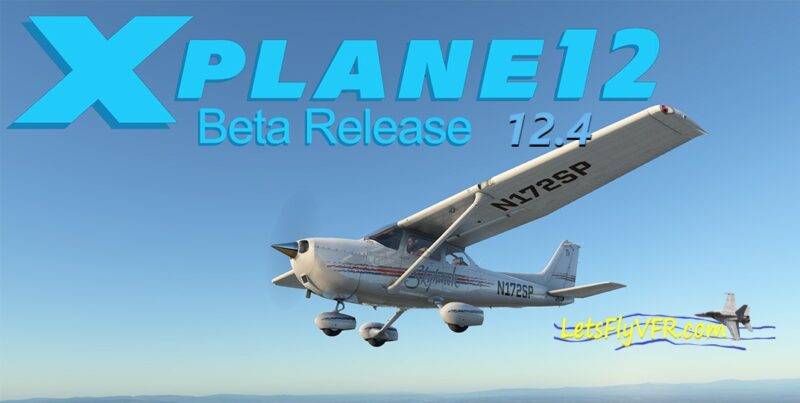
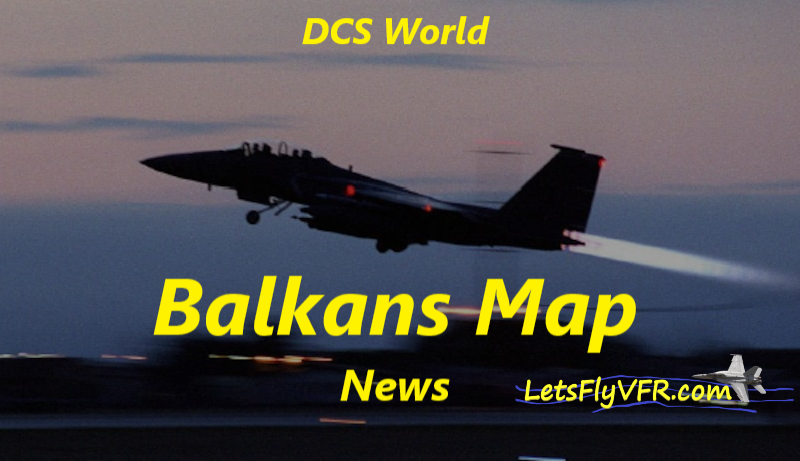




3 responses to “The Ultimate Beginner’s Guide to the DCS F-16 Viper: Mastering Air Combat and Ground Support.”